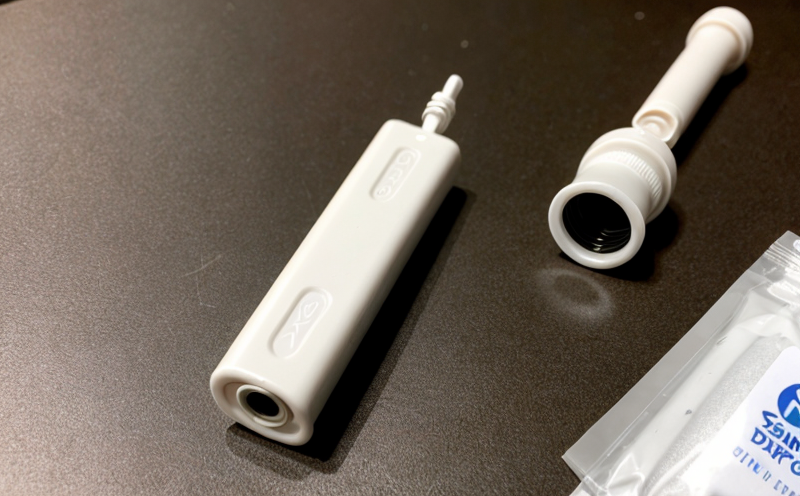Guidewire Torqueability Testing
Torqueability is a critical performance characteristic of guidewires used in medical procedures. Ensuring that a guidewire can be effectively turned or twisted without breaking is essential for patient safety and successful surgical outcomes. In this context, guidewire torqueability testing involves assessing the rotational force required to induce a specific angle of twist, ensuring compliance with international standards such as ISO 10993-4 and ASTM F2667.
The testing process typically begins with careful preparation of the guidewire specimen. This includes selecting appropriate specimens that represent the intended use conditions. The specimen must be free from defects and should mimic real-world conditions as closely as possible. Once prepared, the guidewire is placed into a torque tester designed specifically for this type of evaluation.
The tester applies incremental rotational forces to the guidewire until it reaches a predetermined angle or fails under load. This process allows engineers to determine the maximum torque that can be applied before failure occurs. The testing apparatus must be capable of measuring these forces accurately and consistently, ensuring reliable results.
Understanding the standards is crucial for accurate testing. For instance, ISO 10993-4 addresses biocompatibility testing, which indirectly supports torqueability by ensuring materials are safe for use in the human body. ASTM F2667 focuses more directly on guidewires and their mechanical properties, including torqueability.
Compliance with these standards ensures that devices meet regulatory requirements and provide consistent performance across batches. This is particularly important given the critical role guidewires play in various medical procedures where precision and reliability are paramount.
- Consistency: Ensuring every guidewire batch performs similarly under torque stress.
- Safety: Preventing failures that could lead to patient harm during procedures.
- Performance: Guaranteeing the guidewire can achieve necessary angles and rotations without damage.
By adhering to these standards, manufacturers can demonstrate their commitment to quality and safety. This not only enhances trust with regulatory bodies but also improves overall product reliability in clinical settings.
Applied Standards
The primary standard for guidewire torqueability testing is ISO 10993-4, which covers biocompatibility testing of medical devices. While not directly focused on mechanical properties like torqueability, it ensures that materials used in the guidewires are safe when implanted or inserted into the human body.
ASTM F2667 provides a more direct framework for assessing the mechanical characteristics of guidewires, including their ability to withstand rotational forces. This standard specifies the test methods and criteria necessary to evaluate torqueability effectively.
These standards are essential because they provide clear guidelines on how to perform tests accurately and consistently. Adherence to these standards ensures that all devices undergo rigorous evaluation under controlled conditions, leading to more reliable products.
Incorporating these standards into the testing process helps manufacturers meet regulatory requirements and enhances trust in their products among healthcare providers and patients alike. It also facilitates smoother interactions with regulatory agencies by providing standardized data points for review.
Why Choose This Test
Guidewire torqueability testing is essential for ensuring the safe and effective use of guidewires during medical procedures. The ability to rotate or twist a guidewire within specified limits without causing damage is critical for several reasons:
- Patient Safety: A guidewire that cannot withstand required rotational forces may break, leading to potential harm.
- Ease of Use: Proper torqueability ensures the guidewire can be maneuvered into difficult anatomical spaces more easily.
- Consistency: Ensuring consistent performance across different batches or production runs is crucial for maintaining quality standards.
Incorporating torqueability testing early in the product development process allows manufacturers to identify potential issues before they become costly problems. This proactive approach not only saves time and resources but also enhances overall product reliability and safety.
Moreover, compliance with relevant standards like ISO 10993-4 and ASTM F2667 adds credibility to your products by demonstrating adherence to industry best practices. It helps build trust among healthcare professionals who rely on these devices during critical procedures.
The benefits of conducting thorough torqueability testing extend beyond mere compliance; they contribute significantly to the success of medical device companies by improving product quality and patient outcomes. By investing in robust testing protocols, you ensure that each guidewire meets the highest standards of safety and effectiveness.





